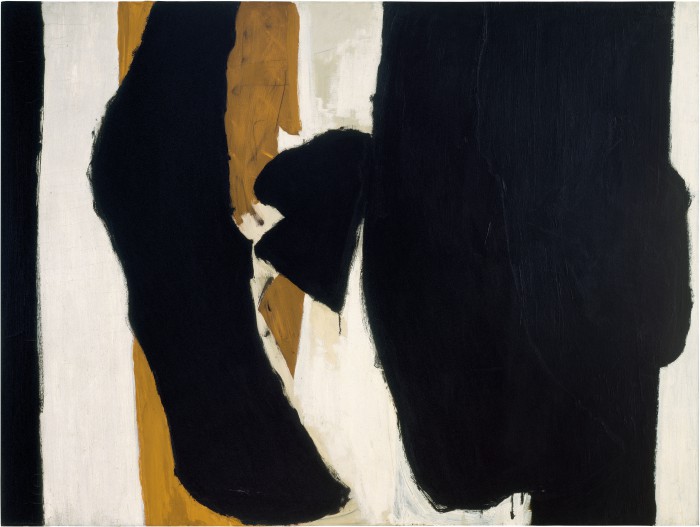Robert Motherwell
Wall Painting No. IV 1954

Art © Dedalus Foundation, Inc./Licensed by VAGA, New York, NY. Reproduction of this image, including downloading, is prohibited.
Robert Motherwell graduated from Stanford in 1937, having studied psychology, philosophy, and literature. Motherwell started a graduate degree in art history at Columbia University under the guidance of renowned art historian Meyer Schapiro. In New York, Motherwell strayed from history and became a practicing artist. He would go on to found the abstract expressionism movement with contemporaries like Jackson Pollock and Mark Rothko. Wall Painting IV shows Motherwell’s investment in shape and emotion. The crescent of black paint—a recurring shape in Motherwell’s oeuvre—tears through the center of the canvas. The swaths of black become the players in Motherwell’s drama, disturbing the regular order of the alternating brown and white stripes.
Motherwell, who received a BA in philosophy from Stanford in 1937, arrived in New York in 1940 to pursue a PhD in art history at Columbia University. His academic advisor, art historian Meyer Schapiro, encouraged him to pursue painting instead. He was soon counted among the major abstract painters of the New York School. In 1950, he participated in an exhibition called The Muralist and the Modern Architect, for which he prepared sketches for a mural in a school auditorium. Though the mural was never realized, the project inspired Motherwell’s interest in painting on an architectural scale. Wall Painting No. IV emphasizes the monumental flatness of the wall. The stark color contrasts bring the viewer’s attention to the brushstrokes and paint drips, creating a sense of depth while framing the work’s abstract forms.
-Sidney Simon, PhD ‘18





